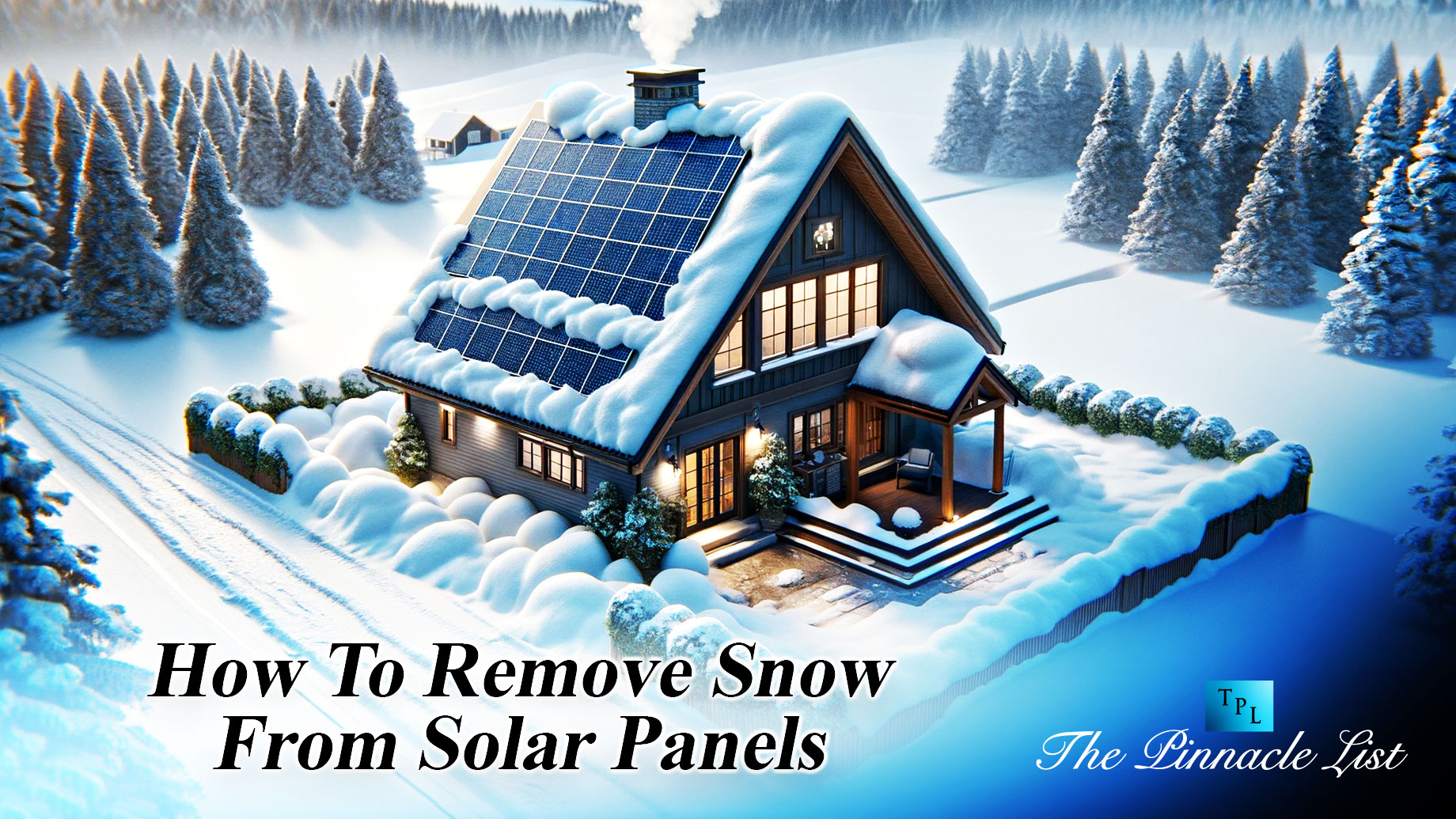
Snow buildup on solar panels can significantly reduce their efficiency, impacting energy production and potentially leading to costly consequences. In this comprehensive guide, we will explore the importance of removing snow from solar panels, the risks associated with neglecting this maintenance task, and the safe methods to clear snow from solar panels effectively.
We will discuss the essential tools required, precautions to be taken, and the different methods available for snow removal. Understanding the dos and don’ts of this process is crucial for preserving the integrity of the solar panels. We will also address the frequency of snow removal and provide valuable tips for preventing snow buildup on solar panels.
Whether you are a solar panel owner or considering investing in solar energy, this article will equip you with the knowledge to maintain optimal performance and maximize the benefits of solar energy during a heavy snow season.
Key Takeaways:
- Removing snow from solar panels is important to ensure maximum energy production and prevent damage.
- The risks of not removing snow from solar panels include reduced energy production, potential damage to panels, and safety hazards.
- Some safe methods for removing snow from solar panels include using a soft broom or brush, a snow rake, a leaf blower, or warm water/de-icing solution.
Why Is It Important to Remove Snow from Solar Panels?
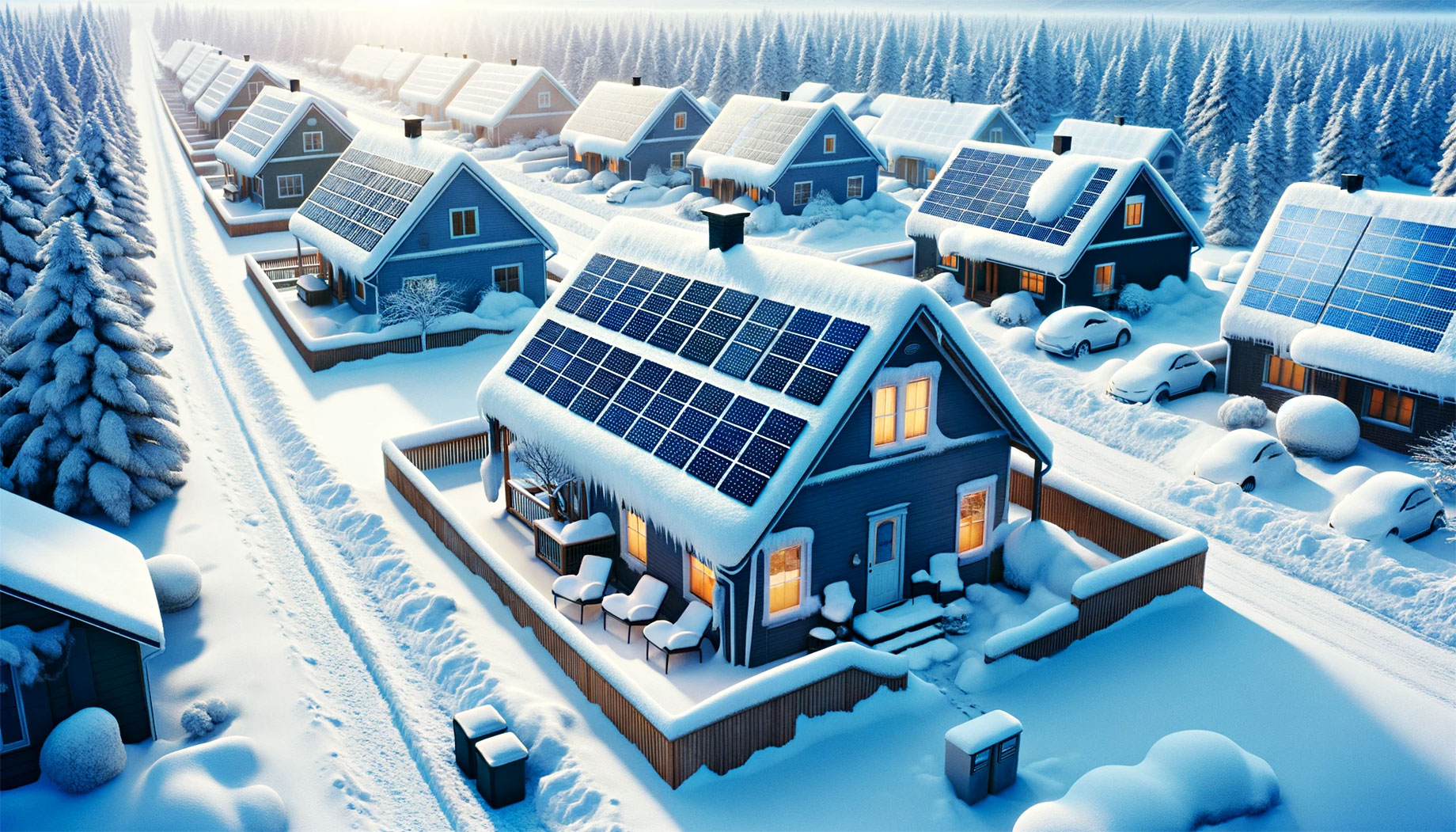
It is crucial to remove snow from solar panels to ensure the efficient operation of the energy system, especially during winter in the Mid-Atlantic States, such as New Holland, PA. Snow removal from solar panels is important for maintaining the panels’ efficiency and energy production.
When snow accumulates on solar panels, it can significantly reduce energy production, impeding the panels’ effectiveness in converting sunlight into electricity. Without proper snow removal, solar panels may not generate sufficient power to meet the energy demands of households or businesses, leading to potential disruptions and increased reliance on traditional power sources.
In locations like New Holland, PA, where winters are prone to heavy snowfall, neglecting snow removal from solar panels can also result in long-term damage to the panels. The weight of the snow can cause structural stress and even lead to cracks or breakage, requiring costly repairs and affecting the overall lifespan of the solar energy system.
What Are the Risks of Not Removing Snow from Solar Panels?
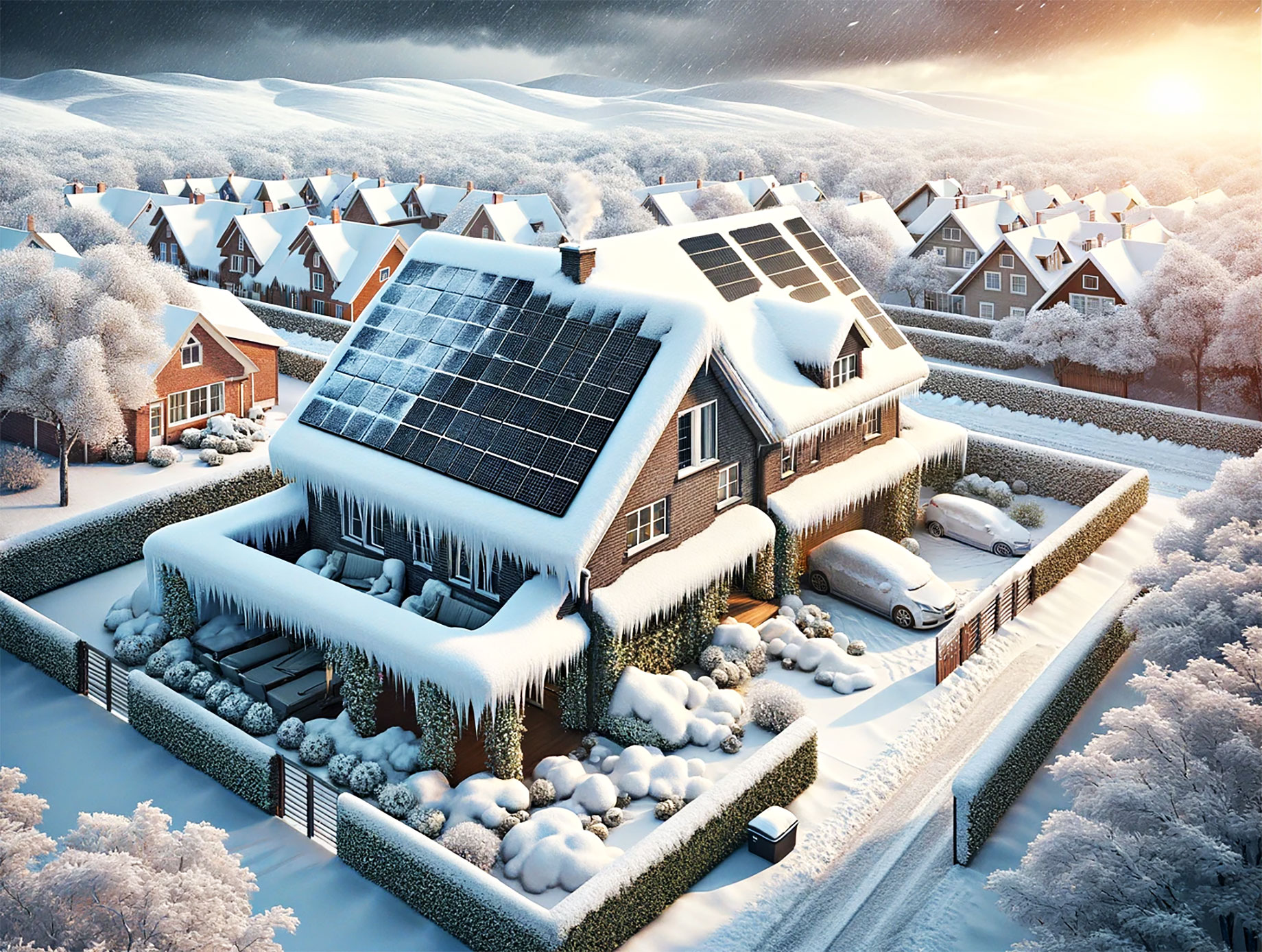
Failing to remove snow from solar panels can lead to reduced energy production and potential damage to the panel system. It is important to address the risks associated with snow buildup on solar panels to maintain their effectiveness in generating energy.
When snow accumulates on solar panels, it forms a barrier that obstructs sunlight from reaching the photovoltaic cells, thus diminishing their ability to convert sunlight into electrical energy. This reduction in energy production can directly impact the efficiency of the entire solar panel system, limiting its ability to meet energy demands. The weight of the snow can strain the panels, potentially causing structural damage or even cracking, leading to costly repairs. Prolonged snow accumulation can disrupt the overall energy efficiency of the system, affecting the sustainability and reliability of renewable energy sources.
How to Safely Remove Snow from Solar Panels?
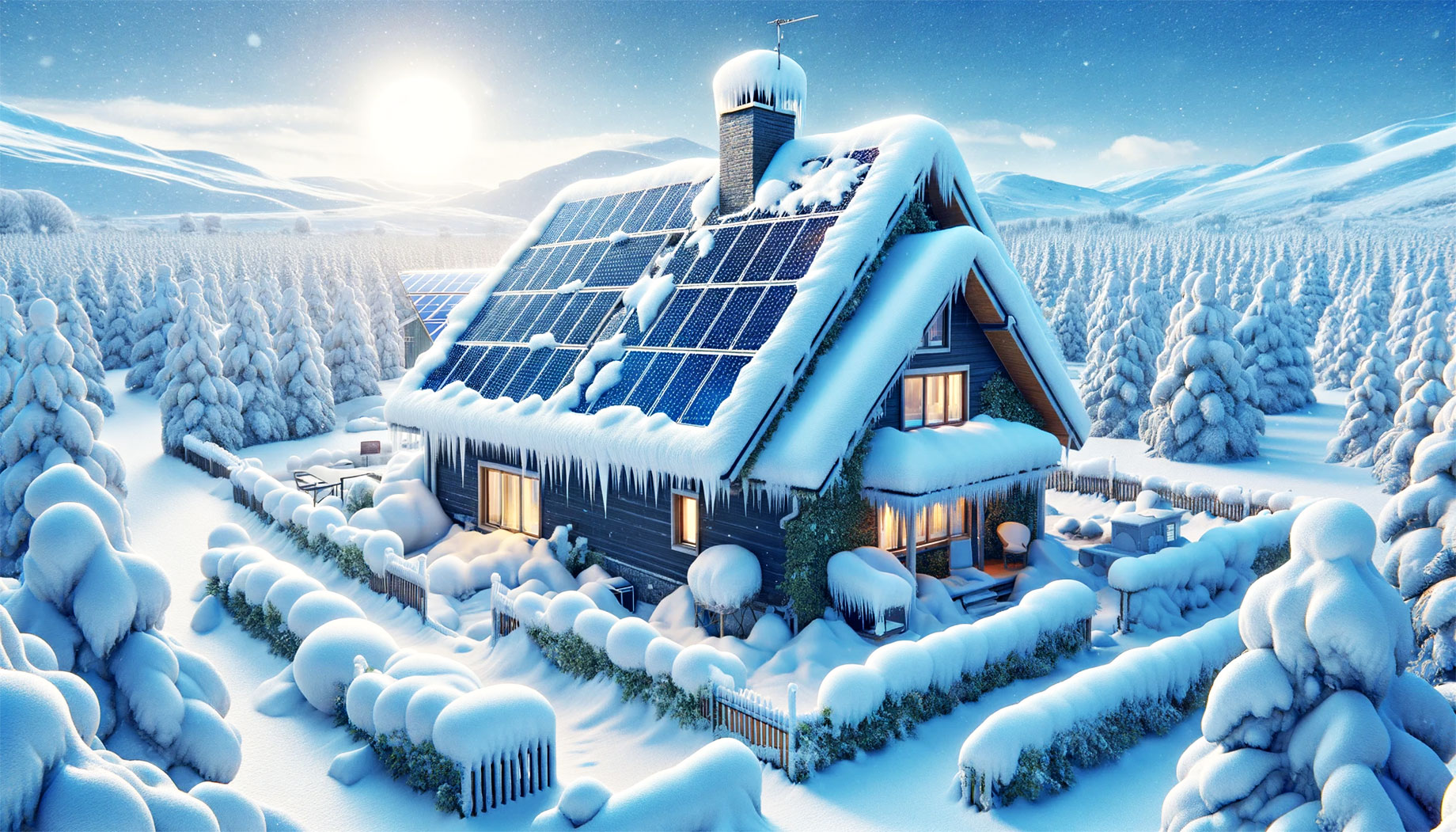
Safely removing snow from solar panels involves utilizing appropriate tools and techniques to ensure the panels are cleared effectively, especially during the winter season. It is essential to consider safe and automated methods for snow removal to protect the integrity of the panels and the roof.
One of the most effective tools for removing snow from solar panels is a soft-bristled brush or a foam snow rake with an extended handle. These tools allow for gentle yet thorough clearing of the panels without causing damage. Investing in automated snow removal systems, such as heated panels or tilt mechanisms, can significantly reduce the need for manual intervention and ensure that the panels remain clear for optimal performance.
Maintaining clear panels during winter is crucial for maximizing energy production and minimizing any potential disruptions.
What Tools Do You Need?
To effectively remove snow from solar panels, you will need specialized tools such as a Snow Rake, SnoBrum, or RoofBrum, designed to clear the panels without causing damage to the system or the roof. These tools aid in safely and efficiently removing snow from solar panels during the winter season.
Each of these tools serves a specific function in snow removal from solar panels. The Snow Rake features an extended handle and a soft, non-abrasive head, allowing you to reach and clear snow from the panels while standing safely on the ground. Conversely, the SnoBrum integrates a unique design with a foam head to prevent scratching or damaging the panels and utilizes a telescoping handle for varying reach.
Similarly, the RoofBrum comprises a patented non-abrasive head and an adjustable length handle, designed to clear snow from solar panels while protecting the roof’s surface. All these tools help safeguard the delicate solar panels from potential damage during the snow removal process, ensuring the longevity and efficiency of the solar panel system.
What Precautions Should You Take?
When removing snow from solar panels, it is important to take precautions to ensure the safety of the panels and the overall system. Precautions include avoiding excessive force and ensuring the system’s integrity throughout the snow removal process.
Using soft-bristled brushes or snow rakes is recommended to prevent potential damage to the panels. It is also essential to be mindful of the panel’s surface and avoid using sharp tools or harsh materials that could scratch or cause abrasions. Monitoring the structure’s stability and weight distribution during clearing is crucial to prevent any structural damage. Clear communication with experienced professionals or referring to the manufacturer’s guidelines for specific snow removal instructions can facilitate a safe and efficient process while preserving the solar panel system’s functionality.
What Are the Different Methods of Removing Snow from Solar Panels?
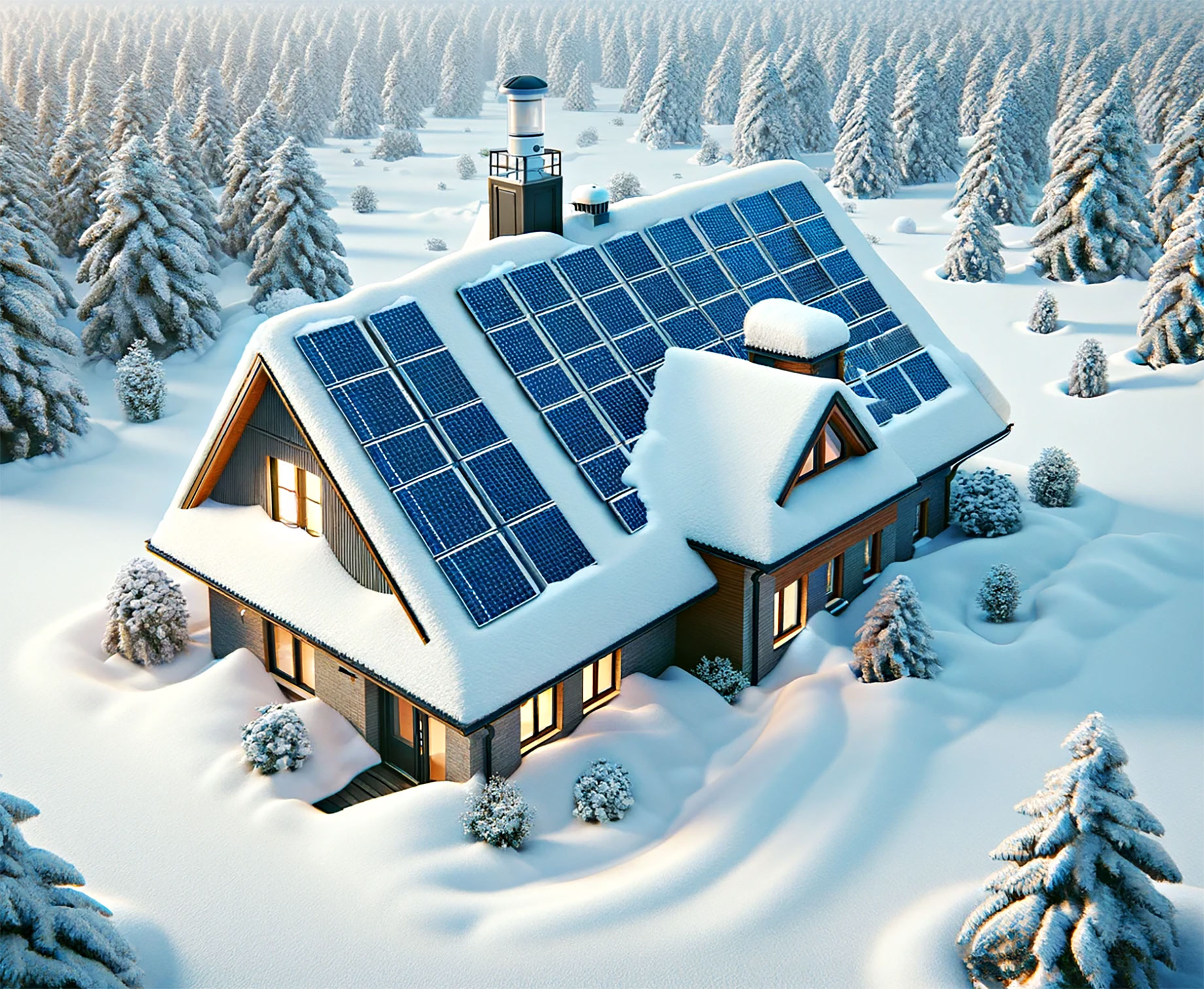
There are various methods for removing snow from solar panels, including using a soft broom or brush, a snow rake, a leaf blower, or warm water and de-icing solutions. Each method offers unique benefits for effectively clearing the panels during winter.
Using a soft broom or brush is a gentle and manual approach that involves physically pushing the snow off the panels without causing any damage. A snow rake, on the other hand, is designed specifically for removing snow from high or hard-to-reach areas and is equipped with a telescoping handle for convenience.
A leaf blower can also be effective in clearing light, powdery snow from solar panels, provided it is operated at low settings to prevent panel damage.
For more stubborn snow and ice, applying warm water or a de-icing solution can help to melt and clear these obstructions. It is important to use solutions specifically designed for solar panels to avoid causing any damage.
Each method provides a tailored solution for different types of snow and varying weather conditions, ensuring that your solar panels remain operational and efficient during the winter months.
Using a Soft Broom or Brush
Using a soft broom or brush to remove snow from solar panels provides a gentle and effective approach without causing damage to the panels. This method ensures the panels are cleared safely and efficiently.
Soft brooms and brushes are specifically designed to offer a delicate touch to sensitive surfaces like solar panels. The soft bristles or fibers prevent scratches or abrasions, maintaining the integrity of the panel’s surface. The flexible nature of soft brooms allows them to adapt to the contours of the panels, ensuring thorough snow removal without any risk of structural damage. This gentle approach also eliminates the need for harsh chemicals or tools that could potentially harm the panels or the environment.
Using a Snow Rake
Utilizing a snow rake is an effective method for removing snow from solar panels, especially in hard-to-reach areas. The snow rake allows for safe and thorough clearing of the panels without the risk of damage.
When using a snow rake, it becomes easier to access snow build-up on solar panels, even in areas that are typically challenging to reach. This ensures that every section of the solar panels can be thoroughly cleared, allowing for optimal sunlight absorption. The design of snow rakes often includes non-abrasive materials, preventing any scratching or damage to the panels during the clearing process.
One of the key benefits of using a snow rake for snow removal is the prevention of ice dams. Removing the snow promptly minimizes the chance of ice formation, which can pose a threat to the integrity of the solar panel installation. Ultimately, this helps maintain the efficiency and longevity of the solar panels, making them a reliable source of renewable energy throughout the winter months.
Using a Leaf Blower
Using a leaf blower can be an efficient method for removing light snow from solar panels, providing a quick and non-intrusive approach to clearing the panels while minimizing the risk of damage.
The advantage of using a leaf blower lies in its ability to swiftly disperse light snow without the need for physical contact, reducing the likelihood of scratching or damaging the solar panels. A leaf blower’s non-intrusive nature allows for gentle removal without disrupting the delicate surface or underlying components. This method enables homeowners and maintenance personnel to quickly restore the panels’ productivity and maximize the generation of solar energy.
The efficiency of the leaf blower makes it a practical and sustainable tool for snow removal from solar panels, contributing to overall energy conservation.
Using Warm Water or a De-icing Solution
The use of warm water or a de-icing solution offers an effective method for removing stubborn snow and ice from solar panels, ensuring thorough cleaning without causing damage to the panels or the system.
Warm water and de-icing solutions are gentle yet powerful tools for clearing snow and ice from solar panels. Their effectiveness lies in their ability to melt the ice and snow without the potential risks associated with harsh scraping or chemical-based solutions. By utilizing warm water or a specialized de-icing solution, the panels can be cleared efficiently, allowing them to continue generating energy without obstruction.
What Are the Dos and Don’ts of Removing Snow from Solar Panels?
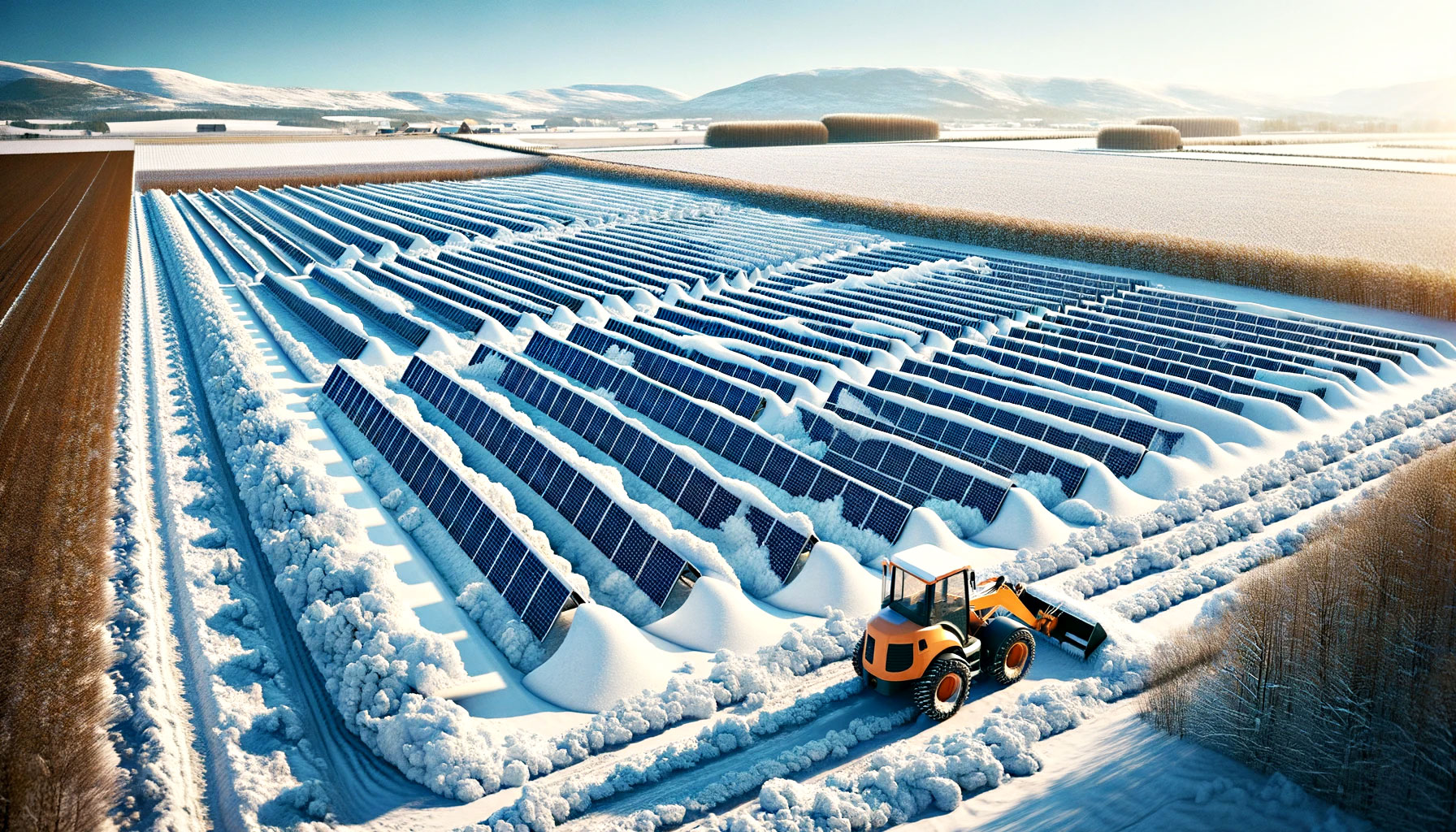
Understanding the dos and don’ts of removing snow from solar panels is crucial for maintaining the integrity of the panels and the overall system. It is important to follow specific guidelines to ensure safe and effective snow removal without causing damage.
First and foremost, do prioritize safety. Before attempting any snow removal, turn off the solar panel system to eliminate the risk of electrical shock.
Additionally, do use soft, non-abrasive tools such as a foam brush or a long-handled broom to gently clear the snow. On the other hand, don’t use sharp objects or metal tools that could scratch or damage the surface of the solar panels.
Do: Use a Gentle Touch
Using a gentle touch during snow removal from solar panels is essential for preventing damage to the panels and ensuring the effectiveness of the clearing process. It is important to handle the panels with care to maintain their integrity.
When clearing snow from solar panels, gentleness is key to prevent scratching or cracking the delicate surface. The accumulation of heavy snow can compromise the efficiency of energy production, making timely removal crucial. By employing a soft bristle brush or gentle sweeping motion, it is possible to safely clear the panels without causing harm. Being mindful of the angle and pressure applied can help preserve the longevity and performance of the panels.
Do: Be Mindful of the Solar Panel’s Surface
Being mindful of the solar panel’s surface during snow removal is crucial for preventing scratches or damage. It is important to handle the panels with care and attention to preserve their efficiency and functionality.
Protecting solar panel surfaces from potential harm, especially during snow removal, is imperative to ensure optimal performance and longevity. Snow should be gently cleared using non-abrasive tools, such as a soft brush or broom, to avoid scratching the surface.
Regular solar panel maintenance and inspection can help detect any signs of damage early on, allowing for timely repairs and avoiding further deterioration. A proactive approach to safeguarding solar panels can significantly contribute to their durability and efficiency.
Don’t: Use Metal Tools or Sharp Objects
Avoid using metal tools or sharp objects for snow removal from solar panels to prevent potential damage to the panels and the system. It is important to prioritize the safety and integrity of the panels during the clearing process.
When snow accumulates on solar panels, it can significantly reduce their energy output, affecting the overall efficiency of the system. Using metal tools or sharp objects can scratch, dent or even crack the delicate surface of the panels, compromising their functionality and longevity. In addition, the presence of metal objects near the panels can pose electrical hazards, potentially leading to short circuits or equipment damage.
Don’t: Use Hot Water
Using hot water for snow removal from solar panels should be avoided to prevent potential damage to the panels and the system. It is important to prioritize safe and effective methods that do not compromise the integrity of the panels.
Solar panels are designed to withstand various weather conditions, including snow. The use of hot water can pose serious risks to their functionality. The high temperature can cause thermal shock, leading to cracks or delamination of the panels, ultimately reducing their efficiency. Hot water can also cause rapid melting, creating ice dams that may potentially damage the panels during the refreezing process.
The sudden and uneven temperature changes due to hot water can lead to stress on the materials, potentially weakening them over time. Therefore, utilizing safer and more efficient snow removal methods, such as soft-bristled brushes or specialized snow rakes, is essential to maintain the longevity and performance of the solar panels.
How Often Should You Remove Snow from Solar Panels?
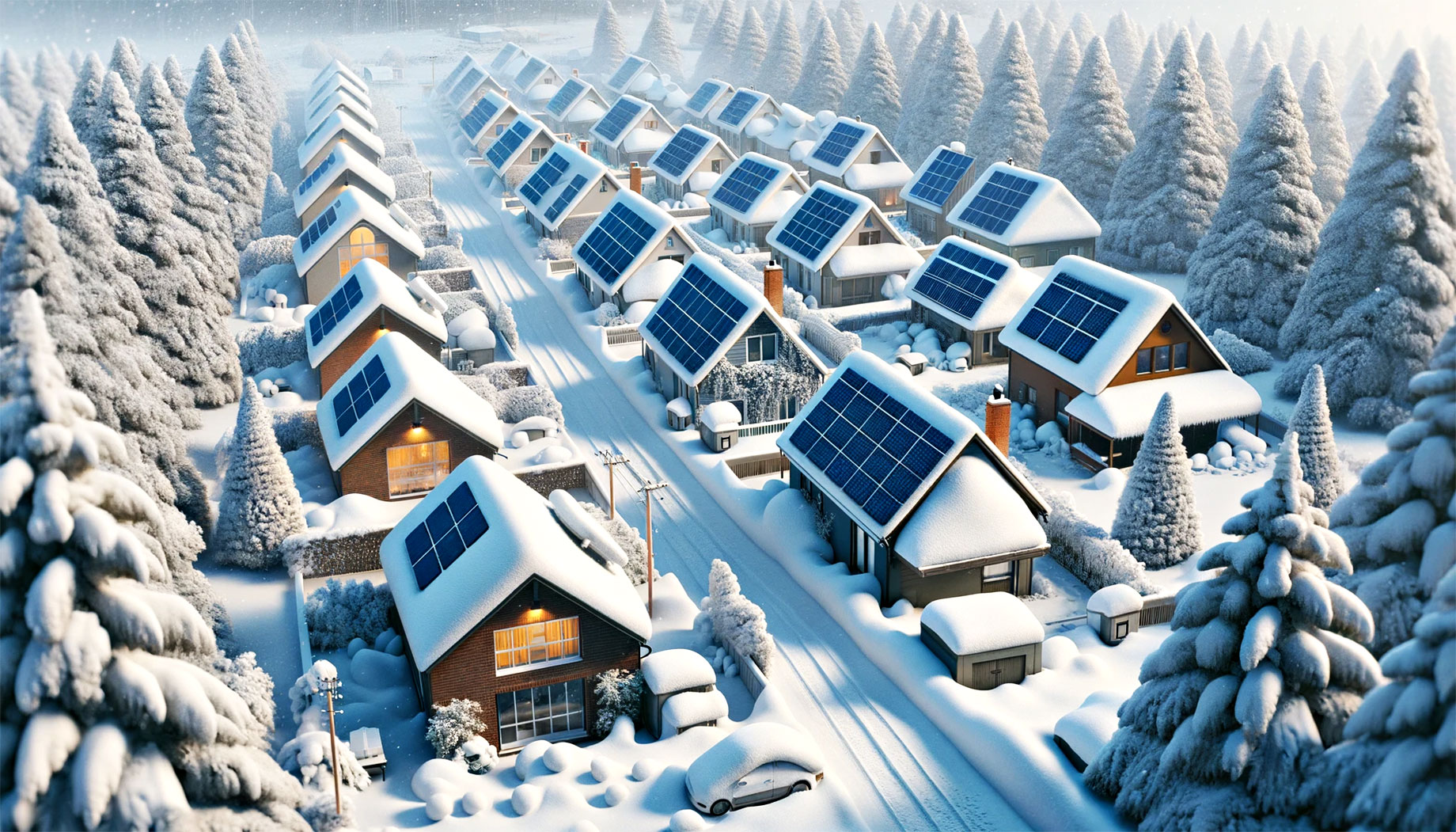
The frequency of snow removal from solar panels depends on the buildup of snow and the prevailing weather conditions. It is important to monitor the panels and clear the snow as needed to maintain their efficiency and energy production.
Heavy snowfall and prolonged periods of low temperatures can lead to significant accumulation of snow on solar panels, reducing their ability to generate electricity. In regions with frequent snowfalls, the frequency of snow removal may need to be higher to prevent prolonged losses in energy production.
Factors such as the angle of the panels and the presence of shading can influence the rate at which snow accumulates. Panels positioned at a steeper angle are more likely to shed snow naturally, reducing the need for frequent manual removal. Similarly, monitoring for shading from nearby trees or structures is essential to assess the impact on snow accumulation.
What Are Some Tips to Prevent Snow Buildup on Solar Panels?
Implementing proactive measures such as automated snow removal systems and regular panel inspections can help prevent snow buildup on solar panels.
It is important to incorporate effective strategies to minimize the impact of snow accumulation on panel efficiency.
One of the most effective proactive measures in preventing snow buildup on solar panels is the use of automated snow removal systems. These systems are designed to detect snow accumulation and activate mechanisms to remove it, helping to maintain the panel’s productivity.
Regular panel inspections are crucial to identify any snow buildup early and address it promptly. Implementing these strategies can significantly improve the overall performance and longevity of solar panels.
FAQs about Removing Snow from Solar Panels
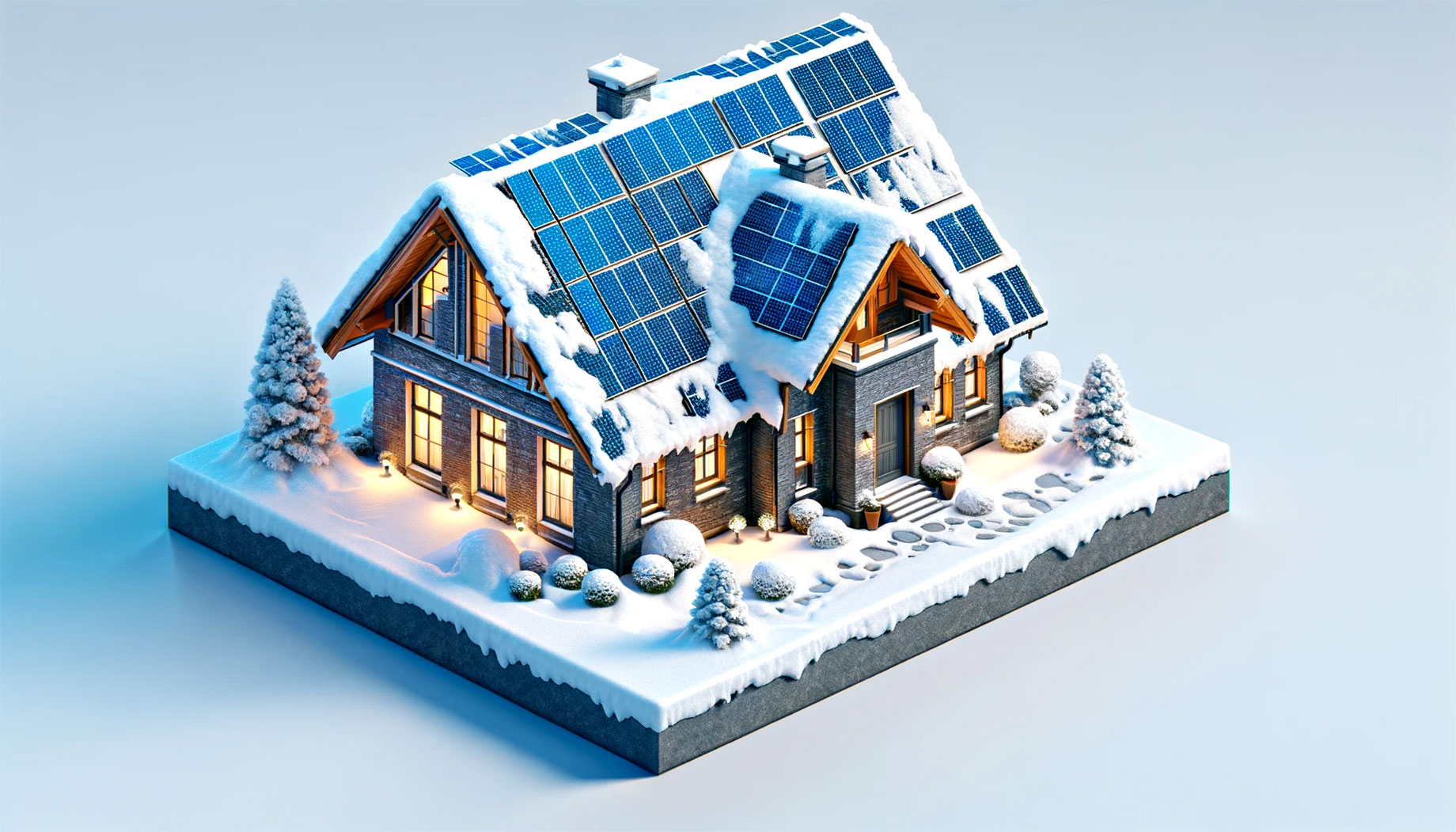
Why is it important to remove snow from solar panels?
Snow accumulation on solar panels can significantly decrease their efficiency, resulting in lower energy production and potential damage to the panels.
How often should I remove snow from my solar panels?
It is recommended to remove snow from solar panels as soon as possible after a snowfall, especially if the panels are heavily covered. This will help prevent damage and maintain optimal energy production.
What is the best way to remove snow from solar panels?
The safest and most effective method is to use a soft-bristled broom or brush to gently sweep the snow off the panels. Avoid using sharp or metal objects, as they can damage the panels.
Can I use hot water to melt snow off my solar panels?
No, using hot water is not recommended as it can cause thermal shock and damage to the panels. It is best to stick to using a broom or brush to remove snow.
Is it necessary to remove all the snow from my solar panels?
You do not need to remove every speck of snow, but it is important to remove enough so that sunlight can reach the panels and they can function properly. Leaving a thin layer of snow can also help prevent damage from ice or debris.
What should I do if I am unable to safely remove snow from my solar panels?
If you are unable to safely remove the snow yourself, it is best to contact a professional solar panel cleaning service. They have the necessary equipment and experience to safely remove snow without causing damage to the panels.
